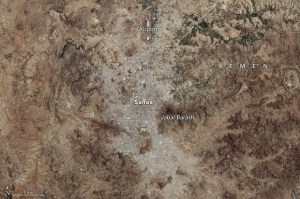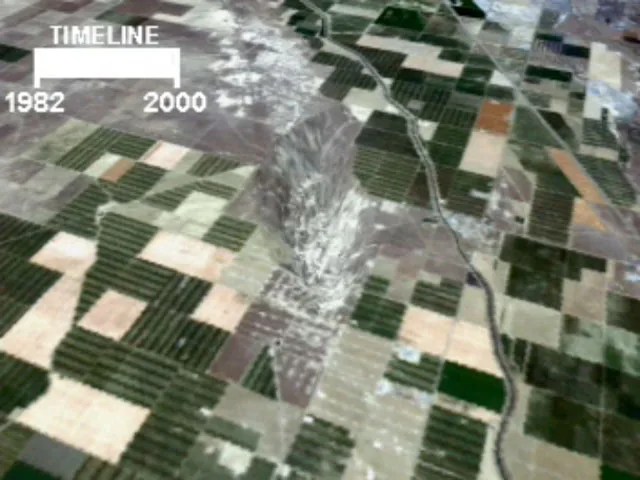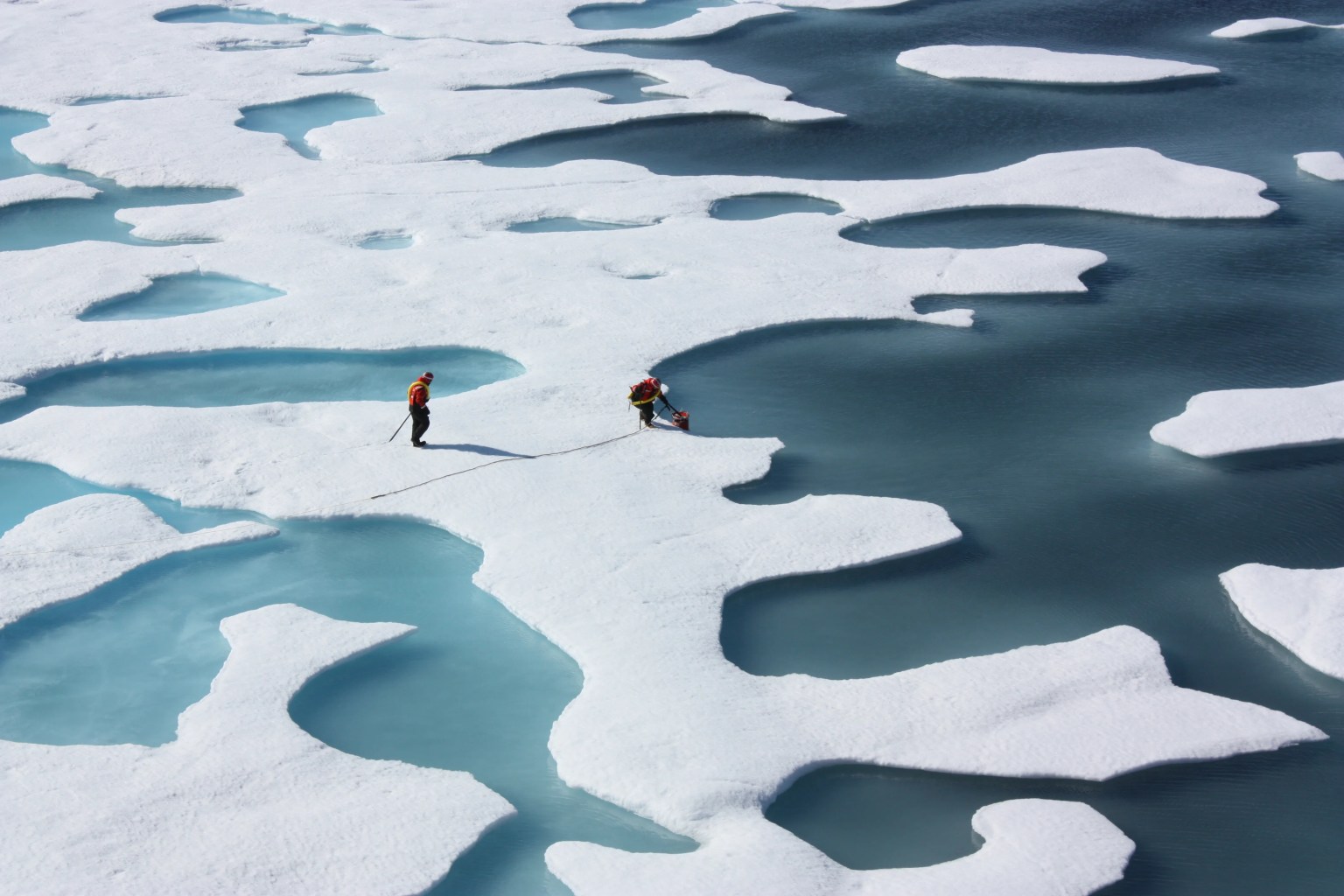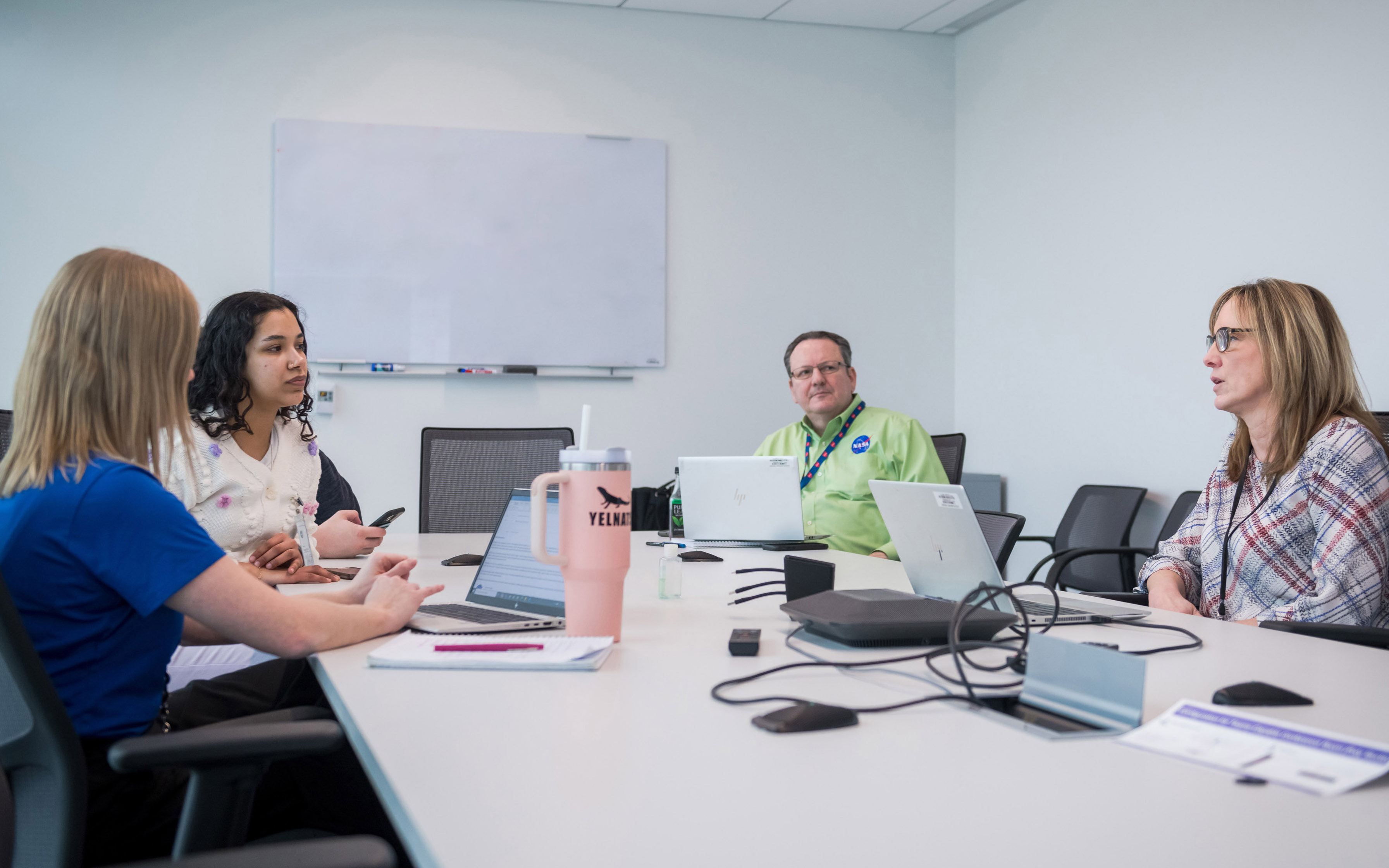NASA Flights Map Critical Minerals from Skies Above Western US
Technology used to chart other worlds is revealing minerals in the American West that are critical to the country’s renewable energy future.

6 min read
NASA Flights Map Critical Minerals from Skies Above Western US
On a crystal-clear afternoon above a desert ghost town, a NASA aircraft scoured the ground for minerals.
The plane, a high-altitude ER-2 research aircraft, had taken off early that morning from NASA’s Armstrong Flight Research Center in Edwards, California. Below pilot Dean Neeley, the landscape looked barren and brown. But to the optical sensors installed on the plane’s belly and wing, it gleamed in hundreds of colors.
Neeley’s flight that day was part of GEMx, the Geological Earth Mapping Experiment led by NASA and the U.S. Geological Survey to map critical minerals across more than 190,000 square miles (500,000 square kilometers) of North American soil. Using airborne instruments, scientists are collecting these measurements over parts of California, Nevada, Arizona, and Oregon. That’s an area about the size of Spain.

Lithium, aluminum, rare earth elements such as neodymium and cerium — these are a few of the 50 mineral commodities deemed essential to U.S. national security, to the tech industry, and to clean energy. They support a wide range of technologies from smartphones to steelmaking, from wind turbines to electric vehicle batteries. In 2023, the U.S. imported its entire supply of 12 of these minerals and imported at least 50% of its supply of another 29.
The GEMx team believes that undiscovered deposits of at least some of these minerals exist domestically, and modern mineral maps will support exploration by the private sector.
“We’ve been exploring the earth beneath our feet for hundreds of years, and we’re discovering that we’ve only just begun,” said Kevin Reath, NASA’s associate project manager for GEMx.
The View From 65,000 Feet
To jumpstart mineral exploration, USGS is leading a nationwide survey from the inside out, using tools like lidar and magnetic-radiometric sensors to probe ancient terrain in new detail.
The collaboration with NASA brings another tool to bear: imaging spectrometers. These advanced optical instruments need to stay cold as they fly high. From cryogenic vacuum chambers on planes or spacecraft, they detect hundreds of wavelengths of light — from the visible to shortwave infrared — reflected off planetary surfaces. The technology is now being used to help identify surface minerals across dry, treeless expanses of the Western U.S.
Every molecule reflects a unique pattern of light, like a fingerprint. Processed through a spectroscopic lens, a desert expanse can appear like an oil painting popping with different colorful minerals, including pale-green mica, blue kaolinite, and plummy gypsum.
“We’re not digging for gold. We’re revealing what’s hidden in plain sight,” said Robert Green, a researcher at NASA’s Jet Propulsion Laboratory in Southern California, who helped pioneer spectroscopic imaging at NASA JPL in the late 1970s. Like many of the scientists involved with GEMx, he has spent years surveying other worlds, including the Moon and Mars.
A handful of such instruments exist on Earth, and Green is in charge of two of them. One, called EMIT (Earth Surface Mineral Dust Source Investigation) flies aboard the International Space Station. Surveying Earth’s surface from about 250 miles (410 kilometers) above, EMIT has captured thousands of images at a resolution of 50 by 50 miles (80 by 80 kilometers) in a wide belt around Earth’s mid-section.
The other instrument rides beneath the fuselage of the ER-2 aircraft. Called AVIRIS (Airborne Visible/Infrared Imaging Spectrometer), it’s helping guide geologists to critical minerals directly and indirectly, by spotting the types of rocks that often contain them. It’s joined by another instrument developed by NASA, the MODIS/ASTER Airborne Simulator (MASTER), which senses thermal infrared radiance. Both instruments provide finely detailed measurements of minerals that complement what EMIT sees on a broader scale.
Old Mines, New Finds
In and around the multimillion-year-old magmas of the Great Basin of the Western U.S., lithium takes several forms. The silvery metal is found in salty brines, in clay, and locked in more than 100 different types of crystals. It can also be detected in the tailings of abandoned prospects like Hector Mine, near Barstow, California.
Abandoned years before a magnitude 7.1 earthquake rocked the region in 1999, the mine is located on a lode of hectorite, a greasy, lithium-bearing clay. Geologists from USGS are taking a second look at legacy mines like Hector as demand for lithium rises, driven primarily by lithium-ion batteries. A typical battery pack in an electric vehicle uses about 17 pounds (eight kilograms) of the energy-dense metal.
Australia and Chile lead worldwide production of lithium, which exceeded 180,000 tons in 2023. The third largest producer is China, which also hosts about 50% of global lithium refining capacity. Total U.S. production was around 1,000 tons, sourced entirely from a deposit in northern Nevada. Known reserves in the state are estimated to contain more than a million metric tons of lithium, according to data collected by the Nevada Bureau of Mines and Geology.
Mine wastes are also potential sources of lithium, said Bernard Hubbard, a remote sensing geologist at USGS, and many other byproduct commodities that are considered critical today but were discarded by previous generations.
“There are old copper and silver mines in the West that were abandoned long before anyone knew what lithium or rare earth element deposits were,” Hubbard said. “What has been a pollution source for communities could now be a resource.”
Following a winter pause, high-altitude GEMx flights over the American West will resume in the spring of 2025, after which USGS will process the raw data and release the first mineral maps. Already, the project has collected enough data to start producing a complete hyperspectral map of California — the first of its kind.
The value of these observations extends beyond identifying minerals. Scientists expect they’ll provide new insight into invasive plant species, waste from mines that can contaminate surrounding environments, and natural hazards such as earthquakes, landslides, and wildfires.
“We are just beginning to scratch the surface in applying these measurements to help the nation’s economy, security, and health,” said Raymond Kokaly, USGS research geophysicist and lead of the GEMx survey.
More About GEMx
The GEMx research project will last four years and is funded by the USGS Earth Mapping Resources Initiative (EarthMRI), through investments from the Bipartisan Infrastructure Law. The initiative will capitalize on both the technology developed by NASA for spectroscopic imaging as well as the expertise in analyzing the datasets and extracting critical mineral information from them.
Data collected by GEMx is available here.
By Sally Younger
NASA’s Earth Science News Team
Share
Details
Related Terms
What's Your Reaction?

















































